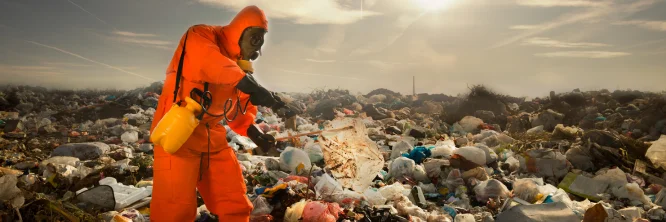Índice
Air pollution is a significant global issue with far-reaching consequences for human health and the environment. Understanding the difference between primary vs secondary pollutants is crucial for developing effective strategies to mitigate air pollution. This article will delve into the classification, sources, and health effects of these two types of pollutants.

Air pollutants can be broadly categorized into two main groups: primary pollutants and secondary pollutants.
Primary pollutants are emitted directly into the atmosphere from a specific source. These pollutants are released in their harmful form and do not undergo any chemical changes before becoming pollutants. Some common examples of primary pollutants include:
Secondary pollutants are formed in the atmosphere when primary pollutants react with each other or with other substances. These chemical reactions can be triggered by sunlight, water, or other atmospheric conditions. Common examples of secondary pollutants include:
Both primary and secondary pollutants pose significant threats to human health and the environment. The harmfulness of a pollutant depends on various factors, including its concentration, exposure duration, and the individual's susceptibility. For example, while primary pollutants like carbon monoxide can cause immediate health problems, secondary pollutants like ground-level ozone can cause long-term respiratory issues.
The primary sources of air pollutants include:
Exposure to air pollutants can have a wide range of adverse health effects, including:
The Clean Air Act is a landmark piece of U.S. environmental legislation that has significantly reduced air pollution levels. This act sets national standards for air pollutants and has led to the development of technologies to control emissions from various sources.
Air pollution not only affects human health but also contributes to climate change. Greenhouse gases, such as carbon dioxide and methane, are also air pollutants. These gases trap heat in the atmosphere, leading to global warming and its associated consequences, including rising sea levels, extreme weather events, and changes in agricultural patterns. Reducing air pollution is crucial for mitigating climate change and ensuring a sustainable future.
Technological advancements have played a significant role in reducing air pollution. Catalytic converters in vehicles, scrubbers in power plants, and advanced emission control systems have helped to significantly reduce emissions of harmful pollutants. Continued research and development are essential for developing even more effective technologies to combat air pollution.
Air pollution is a global issue that requires international cooperation to address effectively. Countries must work together to develop and implement policies and regulations that reduce emissions and improve air quality. International agreements, such as the Paris Agreement, provide a framework for countries to collaborate on climate action, including reducing air pollution.
Raising public awareness about the dangers of air pollution and the steps that individuals can take to reduce their exposure is crucial for promoting environmental action. Education campaigns can help to inform the public about the causes and effects of air pollution, encourage sustainable behaviors, and empower individuals to advocate for cleaner air.
Understanding the distinction between primary and secondary pollutants is essential for developing effective strategies to improve air quality. By addressing the sources of both types of pollutants and implementing stricter regulations, we can significantly reduce the health risks associated with air pollution.
By taking these steps, we can all contribute to a healthier planet and a better future for generations to come.

¡Muchas gracias!
Hemos recibido correctamente tus datos. En breve nos pondremos en contacto contigo.